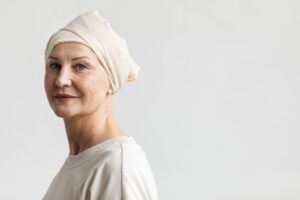What are the types of cancer in women?
Women’s or gynaecological cancers arise in the female reproductive system. These include:
- Cervical cancer
- Ovarian cancer
- Endometrial cancer
- Vaginal cancer
- Vulval cancer
Although breast cancer can occur in both men and women, more than 99% of those diagnosed are women. This article will thus also cover breast cancer’s risk factors and its prevention.
What types of cancer risk factors are there?
Generally, cancer risk factors can be divided into Modifiable Risk Factors and Non-Modifiable Risk Factors. Modifiable risk factors can be tackled by avoiding damaging actions (such as smoking) or partaking in protective activities (such as exercise). Non-modifiable risk factors cannot be avoided, but awareness of these factors allows women to anticipate them through screening and early treatment.

Non-modifiable risk factors of women’s cancer
Age
Our cells constantly mutate as a natural part of life. However, as we grow older, these cells accumulate more mutations, increasing the risk of cancers. As such, older women are highly encouraged to screen themselves for breast and cervical cancer regularly. Regular screening can pick up early-stage asymptomatic cancers to give the best chance of cure and survival.
Family history
Indications of a positive family history include diagnosis at young ages (less than 45 years old), breast cancer in men or diagnosis in multiple blood relatives (such as mother, maternal aunts, grandmothers). The BRCA 1 and 2 mutation is a genetic mutation that predisposes carriers to a much higher risk of breast and ovarian cancer. Women who suspect they may be carriers can seek genetic testing, and carriers often undergo more vigorous screening.
Immunocompromised states
Women taking immunosuppressants, with HIV/AIDs or other medical conditions that affect the immune system are at higher risk of getting cancer. The immune system is a critical component of the body’s defenses against cancer. Hence, immunocompromised women may be encouraged to screen more regularly.
Modifiable risk factors of women’s cancer
Alcohol:
Consumption of alcohol increases the risk of breast cancer. Drinking in moderation or avoiding alcohol can reduce your chances of getting breast cancer.
Smoking:
Smoking increases the risk of ovarian, vaginal and vulval cancer. Smoking is generally discouraged to prevent multiple subtypes of cancer and other diseases.
Obesity
Overweight and obese individuals have a higher risk of breast cancer. Regular physical activity and a healthy diet are recommended for women’s cancer prevention.
Hormone replacement therapy and oral contraceptives
These treatments increase the risk of breast and ovarian cancer. However, these medications may not be a modifiable lifestyle option for some women. As such, they should speak to their doctors about monitoring their risk levels and undergoing regular cancer screenings.
Unsafe sex and Human Papillomavirus (HPV)
HPV is the main cause of cervical cancer. It is also the most prevalent sexually-transmitted infection (STI). Thus, safe-sex practices are essential to prevent the spread of HPV. These practices include using condoms during sexual intercourse, not having multiple sexual partners and having regular tests for STIs. The HPV vaccine is also available in Singapore and is highly recommended for all eligible, so as to prevent HPV before individuals partake in sexual activity.
In conclusion
There are many things one can do for women’s cancer prevention. This list is non-exhaustive, and some of these risk factors may not apply to you. If you have concerns about your risk of getting a women’s cancer, you should further discuss it with your healthcare provider.
